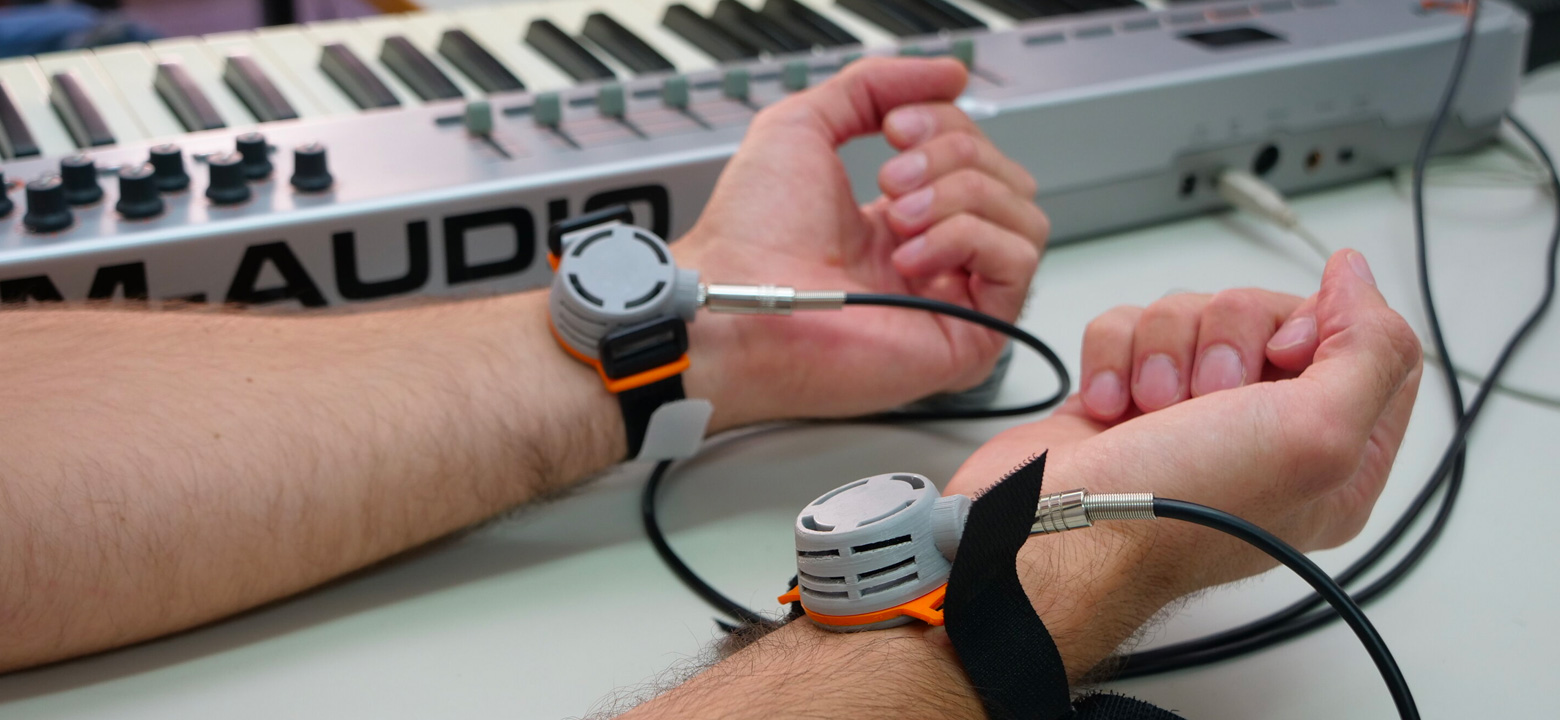
If you've ever stood near a large speaker or been to a live concert, you've probably felt the thrumming vibrations of sound. This is something that venues and schools that serve the Deaf community harnessed long ago to provide a way for people to enjoy music, no matter whether or not they can hear it. Now, new technology aims to improve on this concept and give people with hearing impairments an even better way to listen to music through their sense of touch.
This technology consists of a special algorithm that “reads” music and converts it into tactile sensations. Paul Remache, a researcher with the Department of Electronics of the University of Malaga, developed this algorithm alongside professors Andrés Trujillo and Fernando Vidal. It takes Musical Instrument Digital Interface (MIDI) files and uses these as instructions to create a kind of digital map of the song. This information can then be converted into vibrations.
These aren't the same vibrations seen in vibrating dance floors and other older tech, however. The researchers noted that vibrations alone tend to be unable to trigger the same kind of emotional responses that sound does. Because of this, they've elaborated on this basic idea to create “tactile illusions”—shifts in direction, intensity, and location that are designed to create a fuller, more detailed perception of a song.
Once developed, this technology could fit in a portable terminal that Deaf or hard of hearing individuals could take with them, or even work as a cell phone app with a small plug in peripheral. This would allow people to bring the technology with them when they go to concerts or other venues.
These tactile illusions also open new avenues of therapy. Music is often used in a therapeutic context to lower stress, relieve pain, and help manage some of the symptoms of certain psychological or neurological conditions. If vibrations can replicate this effect in people unable to hear conventional music, it offers them a way to benefit from it the same way that hearing people do.
In the past, technology like vibrating dance floors allowed Deaf and hard of hearing people to enjoy music. While these are effective, they're also somewhat cumbersome and not commonly installed at most music venues. This new technology could make tactile music portable, so users can enjoy it wherever they go.
Tests of this new technology demonstrate that the tactile illusions produced far more positive feelings than negative ones. Interestingly, these feelings often weren't the same as those experienced while listening to a song. The vibrations were, overall, felt to be more positive than the feeling of the original song in the test.
As much as this technology may help Deaf and hard of hearing people, it does face some hurdles. The first, as mentioned above, is that tactile illusions may not convey the original intent of a given song. While a song may sound sad, or intend to provoke fear, the vibrations may not do so. That said, widespread adoption of this technology could also open new ways for musicians to communicate their ideas to their audiences.
Another challenge comes from the medium itself. The human ear is typically very sensitive—even sounds we can't consciously hear can impact our moods and mental states. Our sense of touch has a smaller range of perceptible frequencies than our average sense of hearing, and music is designed with hearing in mind. This means that some detail may be lost in translation between sound and vibration. Again, this is a hurdle that can easily be overcome in the future if this technology becomes mainstream. Musicians can design for vibration as well as sound, to create a fuller, more multidimensional experience for hearing and non-hearing individuals alike.
Music, dance, and the feelings that come from them aren't just for the hearing. People who are Deaf or hard of hearing can enjoy and benefit from music just as much as anyone else, and this technology aims to help that happen. By translating sounds into complex, intricate tactile sensations, it can allow everyone to feel the joy and excitement that comes from a good song.